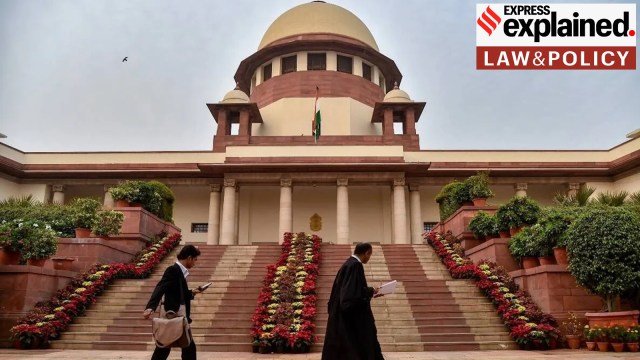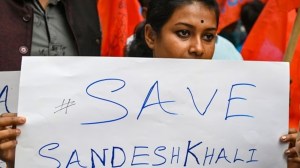- India
- International
Why Supreme Court barred unregulated soil extraction for linear projects
The exemption, offered in March 2020, was challenged before the National Green Tribunal (NGT), which asked the Ministry in October 2020 to review it within three months. As the Ministry dragged its feet, the matter reached the top court, which on March 21 this year struck down the “blanket” and “arbitrary” exemption.
 Similar exemptions under the EP Act have come under judicial scrutiny in the past.
Similar exemptions under the EP Act have come under judicial scrutiny in the past.The Supreme Court has set aside a notification issued by the Environment Ministry three years ago that exempted extraction of ordinary earth for linear projects, such as road and railways construction, from obtaining Environmental Clearance (EC).
The exemption, offered in March 2020, was challenged before the National Green Tribunal (NGT), which asked the Ministry in October 2020 to review it within three months. As the Ministry dragged its feet, the matter reached the top court, which on March 21 this year struck down the “blanket” and “arbitrary” exemption.
What was the 2020 exemption?
In September 2006, the Environment Ministry had issued a notification under The Environment (Protection) Act, 1986, on activities that would require prior EC. In January 2016, a second notification was issued, exempting certain categories of projects from this requirement.
The third notification of March 2020 added “Extraction or sourcing or borrowing of ordinary earth for the linear projects such as roads, pipelines, etc” to the list of exempted activities.
The Centre argued before the NGT that the exemption was necessary “for the aid of general public”, and would help “the kumhars (potters), farmers, gram panchayats, vanjara, oads of Gujarat”, and all non-mining activities identified by the states. It also said that grant of exemption was a policy matter that did not warrant judicial interference.

The general purpose of the 2020 notification was to conform to the amendments made to the Mines and Minerals (Development and Regulation) Act, 1957, in March 2020, allowing new lessees to continue mining for two years with the statutory clearances and licences issued to their predecessors.
What were the grounds for challenge?
The exemption was challenged before the NGT on the ground that allowing the extraction of earth indiscriminately was arbitrary and violative of Article 14 of the Constitution of India. The petitioner argued that the exemption violated the requirement of prior EC in the leases as laid down by the top court in Deepak Kumar versus the State of Haryana (2012).
It was submitted that the Ministry had circumvented the legal procedure of inviting public objections before issuing the 2020 notification by wrongly exercising its powers to do away with such requirements “under the garb of ‘public interest’ during the Covid-19 national lockdown…to serve and further the interest of private miners and contractors”.
In October 2020, the NGT held that the Ministry “should strike a balance and instead of being a blanket exemption, it needs to be hedged by appropriate safeguards such as the process of excavation and quantum”. The Tribunal asked the Centre to “revisit” the notification within three months.
What the government did
The Centre sat on the NGT order until the appellant moved the SC. It was only after the SC concluded the hearing and reserved its judgment on August 10, 2023, that the Ministry issued an Office Memorandum on August 21, laying down the enforcement mechanism for the exemption.
On August 30, 2023, the Ministry notified that the exemption in question would be “subject to the compliance of standard operating procedures and environmental safeguards issued in this regard from time to time”.
What the SC said
First, the court held that “completely unguided and blanket exemption” was arbitrary and violative of Article 14 because the 2020 notification did not define ‘linear projects’ or specify the quantum and the extraction area.
“It is also not provided that only that quantity of ordinary earth, which is required to implement the linear projects, is exempted,” the court said, adding that exemption granted without incorporating any safeguards defeats the purpose of the EP Act.
Second, the court held that the Ministry offered no justification for concluding “that in the public interest, the requirement of public notice should be dispensed with” at any stage — neither in the notification itself nor in its submissions to the NGT and SC. The decision was made without any application of the mind, it said.
Third, even the August 2023 notification, the court said, failed to elaborate on the concept of linear projects, specify the authority responsible for environmental safeguards or provisions for the same, or impose restrictions on the quantum of extraction.
“The notification was issued two days after the nationwide lockdown was imposed… The work of linear projects, such as roads, pipelines, etc, had come to a grinding halt… We fail to understand the undue haste shown by the Central Government in issuing the impugned notification,” the court said.
Not the first time
Similar exemptions under the EP Act have come under judicial scrutiny in the past.
* In January 2018, the NGT quashed an exemption offered by the Ministry’s 2016 notification from the requirement of prior EC for building and construction activities having built-up areas of more than 20,000 sq m. There was nothing to suggest an improvement in the quality of the environment to justify the exemption, the Tribunal observed.
* Underlining that the EP Act mandates prior approval, the NGT in July 2015 struck down two Office Memorandums issued by the Ministry in December 2012 and June 2013 for granting ex-post facto EC to projects under the 2006 notification.
* Another notification of the Ministry in July 2021 sought to perpetuate an amnesty window opened for just six months in March 2017 to clear projects under the “violation category” and issued ex-post facto approval to more than 100 projects, until the SC stayed it in January this year.
* On March 6, the Kerala High Court quashed a 2014 notification that exempted educational institutions and industrial sheds with built-up areas of more than 20,000 sq m from obtaining EC.
More Explained
EXPRESS OPINION
Apr 04: Latest News
- 01
- 02
- 03
- 04
- 05
































